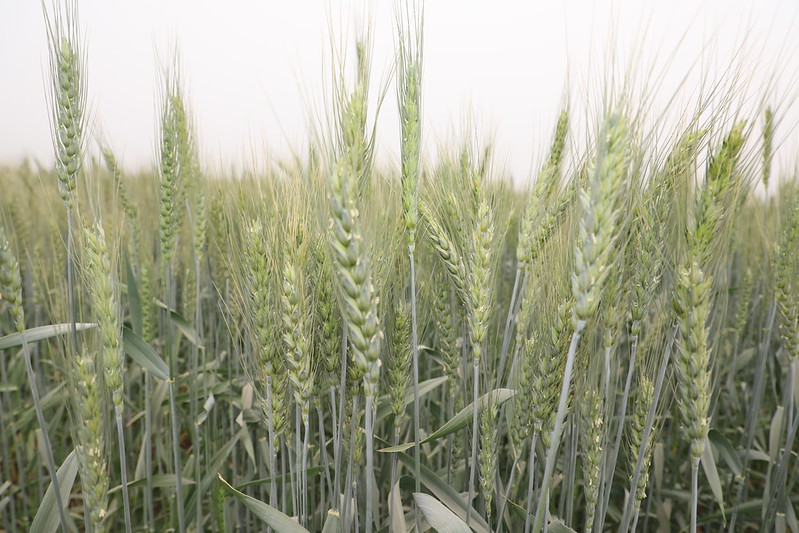From Innovation to Impact: How TAAT-vetted Wheat Variety is pushing Zimbabwe towards self-sufficiency

The African Development Bank, through its Support for Agricultural Research for the Development of Strategic Crops in Africa (SARD-SC) Project and the successor programme, Technologies for African Agriculture Transformation (TAAT), has demonstrated a strong commitment to helping Zimbabwe meet its goals for wheat self-sufficiency. With support from the Department of Research and Specialist Services (DRISS), the bank, through its interventions in wheat led by the International Centre for Agriculture in the Dry Areas (ICARDA), has created and released a new bread wheat variety called SAVE (pronounced SA’-Ve). The heat and drought-tolerant variety, named after the SA’Ve River, is expanding the country’s wheat production, moving it closer to self-sufficiency.
As Africa confronts food insecurity and changing global circumstances, the African Development Bank, through its TAAT programme, is spearheading agricultural innovation, making significant strides in Zimbabwe.
The continent imports about 40 million tons of wheat annually, costing an eye-watering $15 billion. Many African countries heavily depend on wheat imports, with some relying entirely on foreign sources for their needs. However, countries like Ethiopia and Zimbabwe are making impressive progress towards self-sufficiency.
In 2023, Ethiopia increased its irrigated wheat production to approximately 1.3 million hectares, resulting in over 10 million tons harvested from nearly 3 million hectares. Zimbabwe, on the other hand, achieved a wheat production of 468,000 tons from 90,186 hectares in 2023, exceeding its self-sufficiency goal by 30%.
These successes are attributed to the collaborative efforts of farmers, research institutions, financial organizations, the private sector, and supportive government policies to achieve self-sufficiency in wheat and flour.
Central to Zimbabwe’s goal of achieving self-sufficiency in wheat production is the SAVE variety, a new bread wheat developed through collaboration between the TAAT Wheat Compact led by ICARDA and DRISS.
This variety is well-suited to challenging environments, exhibiting resilience against heat, drought, and both yellow and leaf rust. With the capability to yield as much as 7 tons per hectare, SAVE can be grown in both summer and winter seasons, making it particularly suitable for the varied agricultural conditions found in Zimbabwe.
Released in 2022 and adopted by Zimbabwe in 2023, the SAVE variety has outperformed expectations by producing 468,000 tons of wheat across 90,186 hectares, exceeding the national self-sufficiency target by 30%.
This accomplishment is the result of a joint effort among farmers, research institutions, financial entities, the private sector, and government support through programs such as the Accelerated National Irrigation Rehabilitation and Development Programme (ANIRDP) and the Smallholder Irrigation Revitalization Program (SIRP).
In anticipation of potential food shortages due to El Niño, the Zimbabwean government plans to expand winter wheat cultivation to 120,000 hectares in 2024.




The field days at the Rupike, Jombe, and Nyamubarawanda irrigation schemes demonstrated SAVE’s outstanding performance, fostering enthusiasm among farmers about its potential for a prosperous harvest.
These events, organized by DRISS alongside local agricultural extension services, community members, and ICARDA attracted a broad spectrum of stakeholders, including government representatives, private seed companies, and local farmers.
The field days transformed into vibrant community celebrations, featuring theatrical performances, poetry recitals, and songs that recognized the significant contributions of Zimbabwe’s farmers and highlighted the essential role of agriculture in securing the nation’s future.
These events served to bring communities together around the transformative potential of SAVE. Notable farmers received awards comprising quality seeds, fertilizers, and farming tools, which reinforced their commitment to the agricultural revival in Zimbabwe.
The presence of senior officials, such as Dr. Dumisani Kutywayo, Chief Director of DRISS, and the ICARDA wheat team, underscored the significance of these milestones.
“The African Development Bank’s Feed Africa Strategy is driving African nations toward agricultural self-sufficiency by promoting technological innovation and scaling,” emphasized Dr. Zewdie Bishaw, the TAAT Wheat Compact Leader.
Zimbabwe’s achievement with the SAVE wheat variety highlights the effectiveness of innovation, policy implementation, and community engagement. As the nation enhances its wheat production capabilities, it approaches self-sufficiency and is an inspiring model for other African countries.
In Zimbabwe, wheat represents resilience, advancement, and optimism.
Established in 2018 as a central pillar of the African Development Bank’s Feed Africa strategy, TAAT represents a transformative initiative to reverse the trend of declining food productivity in Africa through the scaling of modern food production technologies to 40 million farmers across Africa, focusing on supporting young people and women in low-income regions.
TAAT has scaled up the dissemination of heat-tolerant wheat varieties, drought-tolerant maize, high-yielding rice, cassava, high-iron bean, sorghum, millet, orange-fleshed sweetpotato varieties and high-quality livestock breeds, and fingerlings to more than 12 million farmers, boosting crop production by an estimated 25 million tonnes. This increase in food production is a testament to the programme’s effectiveness in enhancing agricultural productivity across the continent.
TAAT acquires cutting-edge technologies from developers and agricultural research institutions led by the CGIAR for several agricultural value chains covering crops, livestock and fisheries, vets them for scaling readiness and integrates them into its electronic technology catalogue.
TAAT engages governments to integrate proven technologies into their large-scale agricultural investment programmes and partner with the private sector to commercialise them.


